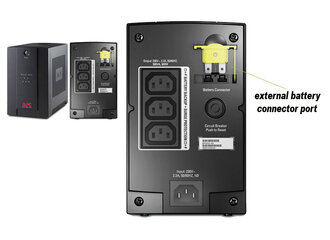...first of all, ang capacity ng battery ay dapat AH (ampere hour)... at dapat same specs talaga (pati edad), meaning sabay dapat pagbili ng battery... si ma'am TS ay 3x120AH solar master ang battery bank (12V system)... umabot ng 5 years... samantalang ang 100AH solar master ko ay inabot lang ng 2 years and 11 months (positive grid corrosion ang sanhi ng pagkamatay or nangingitim ang kulay ng electrolyte).
wala akong idea sa motolite amptech.
- - - Updated - - -
WHAT ARE AMP HOURS (AH)
Source:
http://all-about-lead-acid-batterie...acid-battery-fundamentals/what-are-amp-hours/
Lead Acid Battery Amp Hours (AH) Specification Defined
The Amp Hour (AH) specification provides a measurement of battery capacity. In other words, it is an indication of how much energy can be stored by the battery. A typical Amp Hour specification might read, “100 AH @ 20HR”. The specification is saying that the battery will provide 5 amps of current at a useable voltage continuously for 20 hours. The “5 amps” was calculated by dividing 100 by 20.
Similarly, a battery with a specification that reads “150 AH @ 15 hours” will provide 10 amps of current at a useable voltage continuously for 15 hours. It should be noted that a useable voltage is considered to about 10.5 volts and above on a battery that is under load (or has devices connected).
IMPORTANT! Having defined the AH specification, it is important to understand what the Battery Specification does not say.
A Common Misunderstanding Associated with Amp Hours
Consider the 100 AH battery. As indicated above, it will provide 5 amps of current for twenty hours while maintaining a voltage above 10.5 volts. A common mistake is made when it is assumed that the 100 AH battery will also provide 100 amps for 1 Hour. It won’t. In fact, a battery of this type may only provide about 40 minutes of continuous 100 amp service at best. This is due to a well-known characteristic associated with lead acid batteries. Specifically the capacity will decrease as the rate of discharge increases. In other words the relationship between battery capacity (how much energy is available) and the rate of discharge is not a linear one. The phenomenon being described here is known as
Peukert’s law
Other Amp Hour Rates
As indicated above, the Amp Hour specification on 12 volt batteries is normally based a twenty hour rate. In fact, the specification is so standardized that battery labels often do not include this information. That said, it is important to be aware that deviations from this norm are not uncommon. Some battery manufacturers will establish different rates for their amp hour specification. For example five and ten amp hour rates are not uncommon. In the case of a battery manufacturer who specifies a 100 AH based on five hour rate, the claim is that the battery will provide 20 amps for five hours before dropping below 10. 5 volts.
As previously mentioned, the AH hours is gauge that is useful for relative comparisons. When comparing one battery to another for example, the Amp Hour specification will tell us that a 120 amp hour battery will have more capacity than an 80 amp hour battery.




